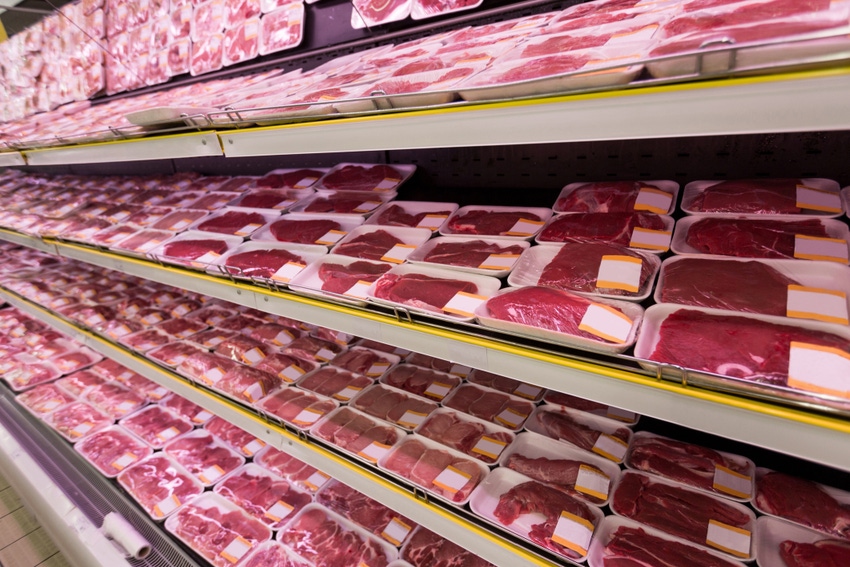Consumers expected to cut back on holiday food spending.

Seven months since the onset of COVID-19, many of the pandemic shopping habits are trending back toward normal, but meat continues to be king, according to Anne-Marie Roerink, president of 210 Analytics LLC.
According to IRI’s latest survey wave of primary shoppers in late September, anxiety levels over in-store visits have decreased significantly, with 58% of shoppers feeling relaxed, a 15% improvement since July. Further, two-thirds of shoppers now spend about the same amount of time shopping in the store as they did before the pandemic, and browsing for different items to try is also up a few points.
“These are all encouraging signs for new product launches and in-store merchandising once more catching the attention of shoppers,” Roerink said.
While shopping patterns are normalizing, food spending at retail remains highly elevated across most departments. Meat remained king of the castle during the month of September.
Despite Labor Day being one of the biggest meat holidays of the year already, Roerink reported that sales associated with the holiday saw tremendous dollar growth of 18.6% over year-ago levels. Volume gains were 11.7% higher and the holiday recorded 11.5% more transactions compared to same week year ago.
Roerink pointed out that the results were positively influenced by the off timing between the 2020 and 2019 holidays. However, if holiday weeks were compared against one another directly, the 2020 performance remains impressive, she said, with a 15.9% increase in dollars and an 8.5% increase in volume.
Survey resulted showed sales during the remainder of the month were driven by everyday demand, which were strong. Dollar sales during September averaged 17.6% higher than the same four weeks in 2019.
Meat department sales were $5.2 billion during the four September weeks — about $778 million higher than the same time period in 2019. On the fresh side, beef accounted for 56.3% of dollars. Chicken was next at 25.4% of dollars. Processed meats had a very strong month as well. Hot dogs led percentage growth at +26.2%, but sausage led in absolute dollar gains.
Roerink shared that overall meat dollar sales so far during the pandemic, starting March 15 through October 4, are up 28.3% and volume sales have increased 16.9% versus the same period last year. This translates into an additional $9.6 billion in meat department sales during the pandemic, which includes an additional $4.5 billion for beef, $1.3 billion for chicken and $957 million for pork than the same period in 2019.
As for what’s ahead, Roerink said everyday demand continues to hold between 10% and 15% above year-ago levels as new COVID-19 case counts continue to rise and fall in different regions of the country. And, while everyday demand seems to have set into a new and elevated pattern, she said holiday demand is expected to be vastly different.
Holidays will be different
According to the latest IRI primary shopper survey wave from late September, only 29% of consumers expect to host or attend a meal with extended family who do not live with them for Thanksgiving. This is down from 48% last year. Friendsgiving and traveling out of state are also more unlikely this year, as Americans are most likely to stay home and celebrate with immediate family, according to 34% of respondents. This will have a profound impact on grocery spending, Roerink said.
Early indications for December holiday celebrations and grocery spending suggest a similar impact as Thanksgiving, and even more are planning to cut back on groceries to save money as many are expecting higher food prices come November and December compared with the 2019 holiday season. Shoppers plan to spend less on groceries, gifts, and decorations across grocery, mass, club, dollar and especially drugstores and local small businesses. Online-only retailers are currently estimated to net a slight gain.
“These predictions point to many potential changes for the meat department,” Roerink explained. “Much like the pandemic-affected holidays to date, it is likely that the winter holidays will see small gatherings, which will affect meat choices. Additionally, less holiday travel will likely express itself in continued retail versus foodservice spending for those at home versus on the road.”
About the Author(s)
You May Also Like



.png?width=300&auto=webp&quality=80&disable=upscale)

